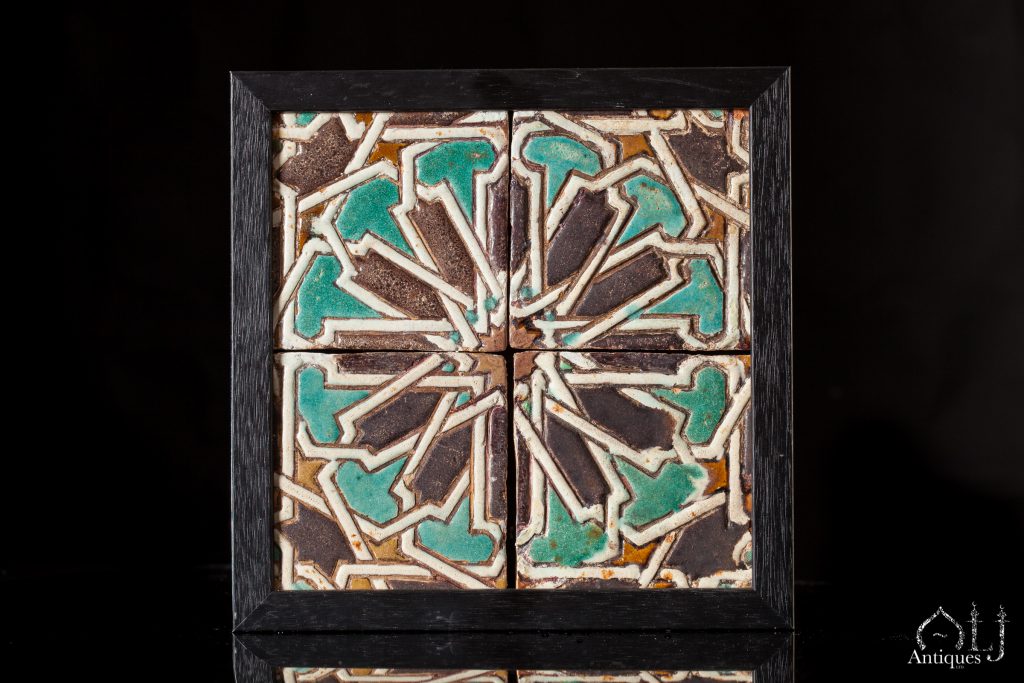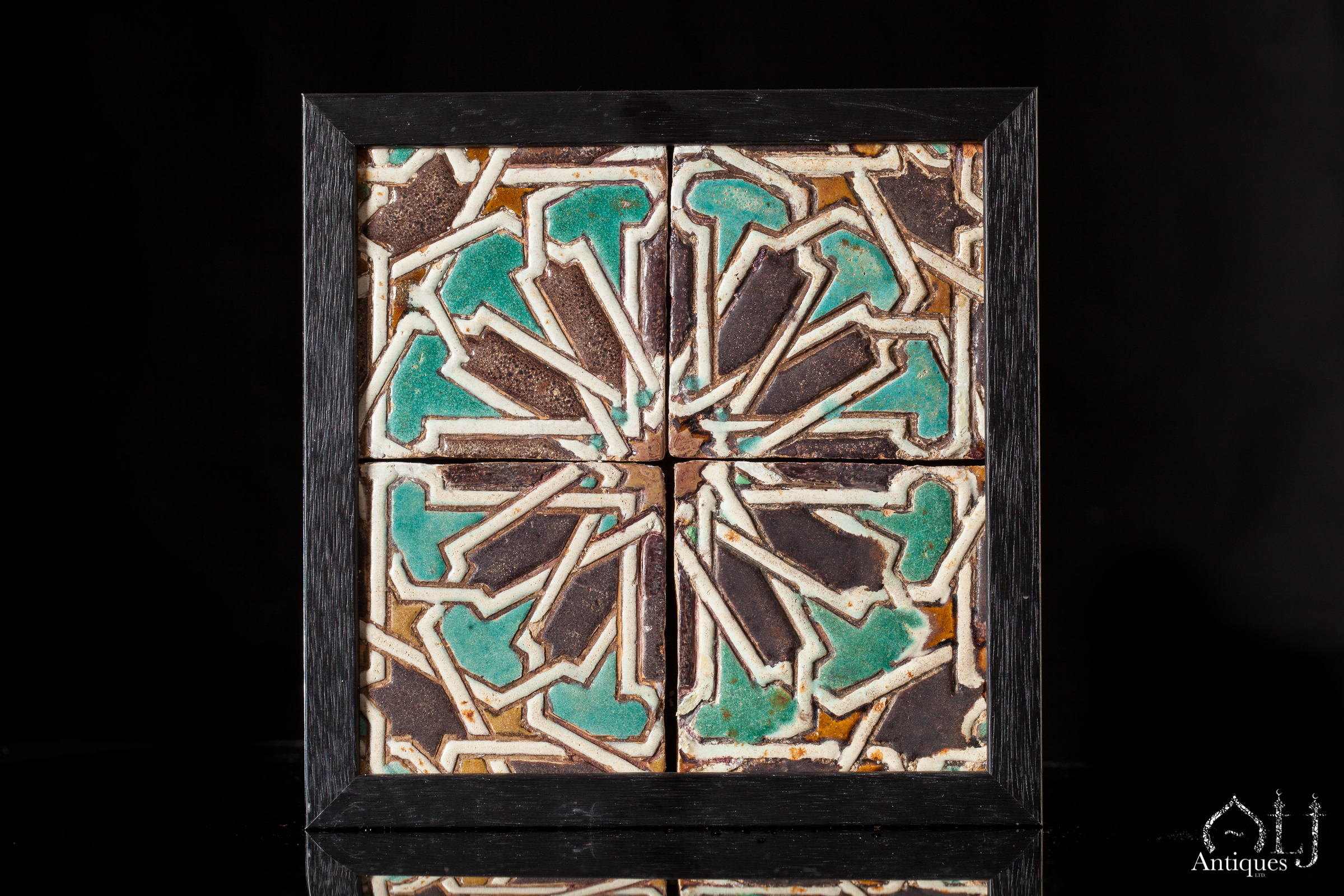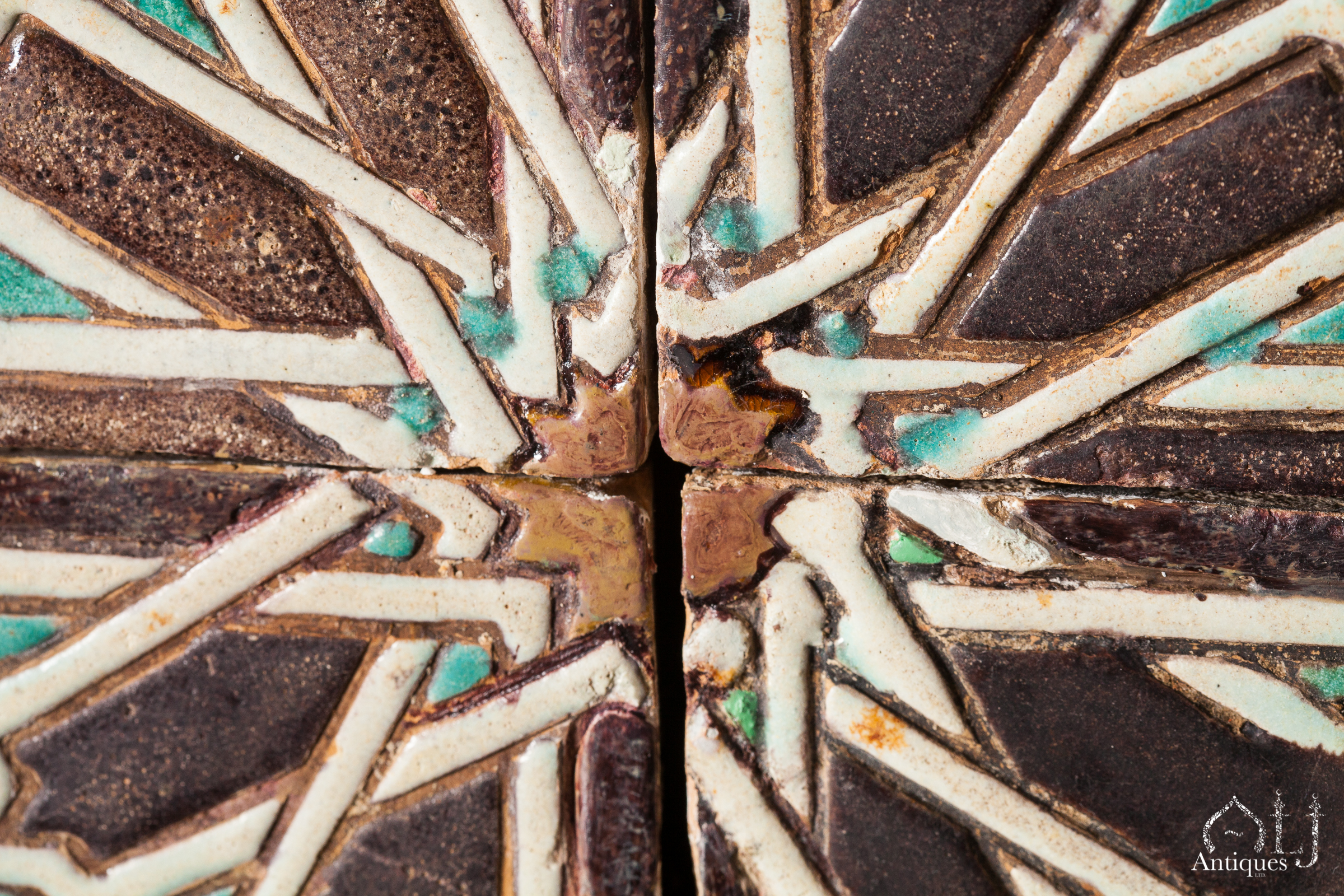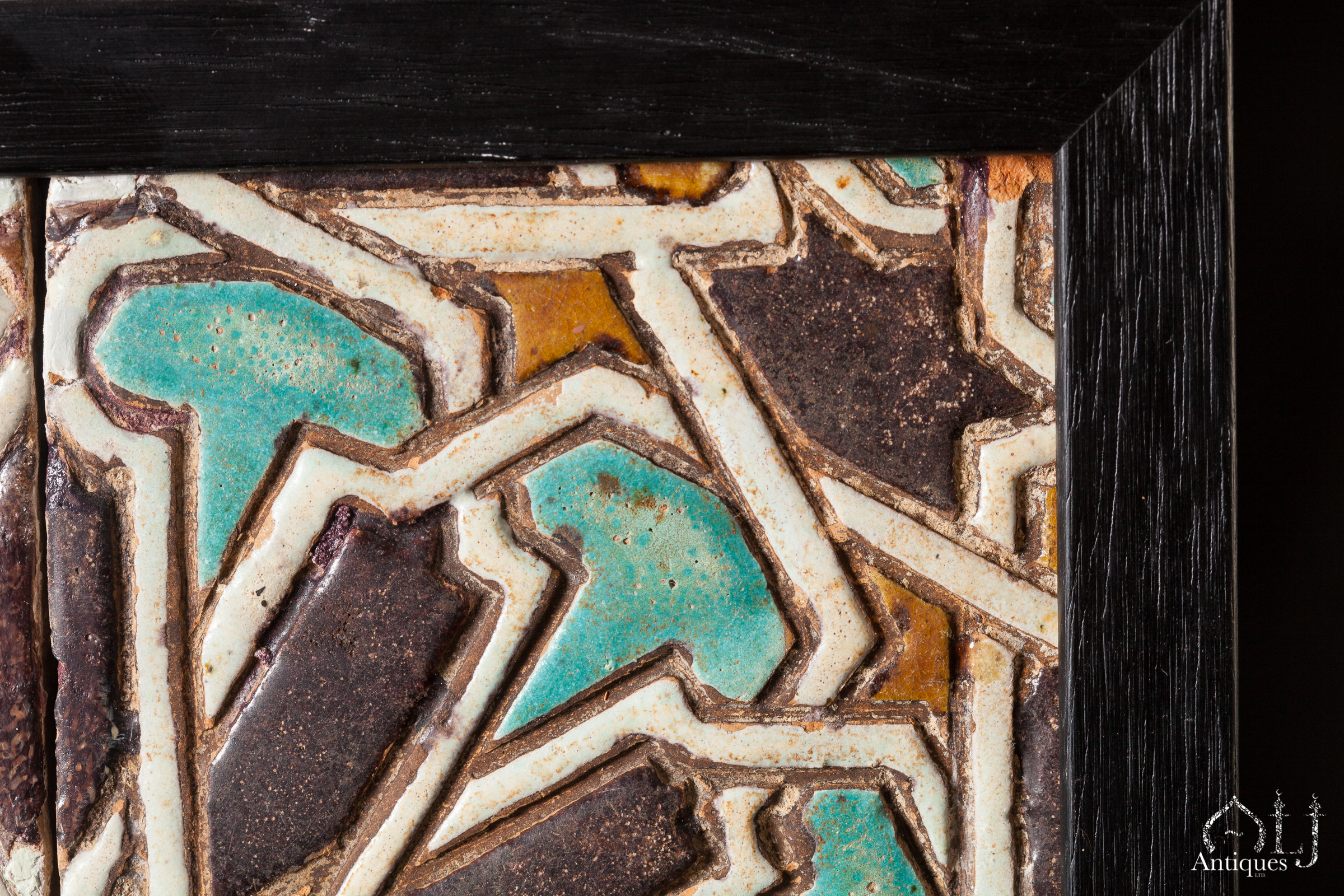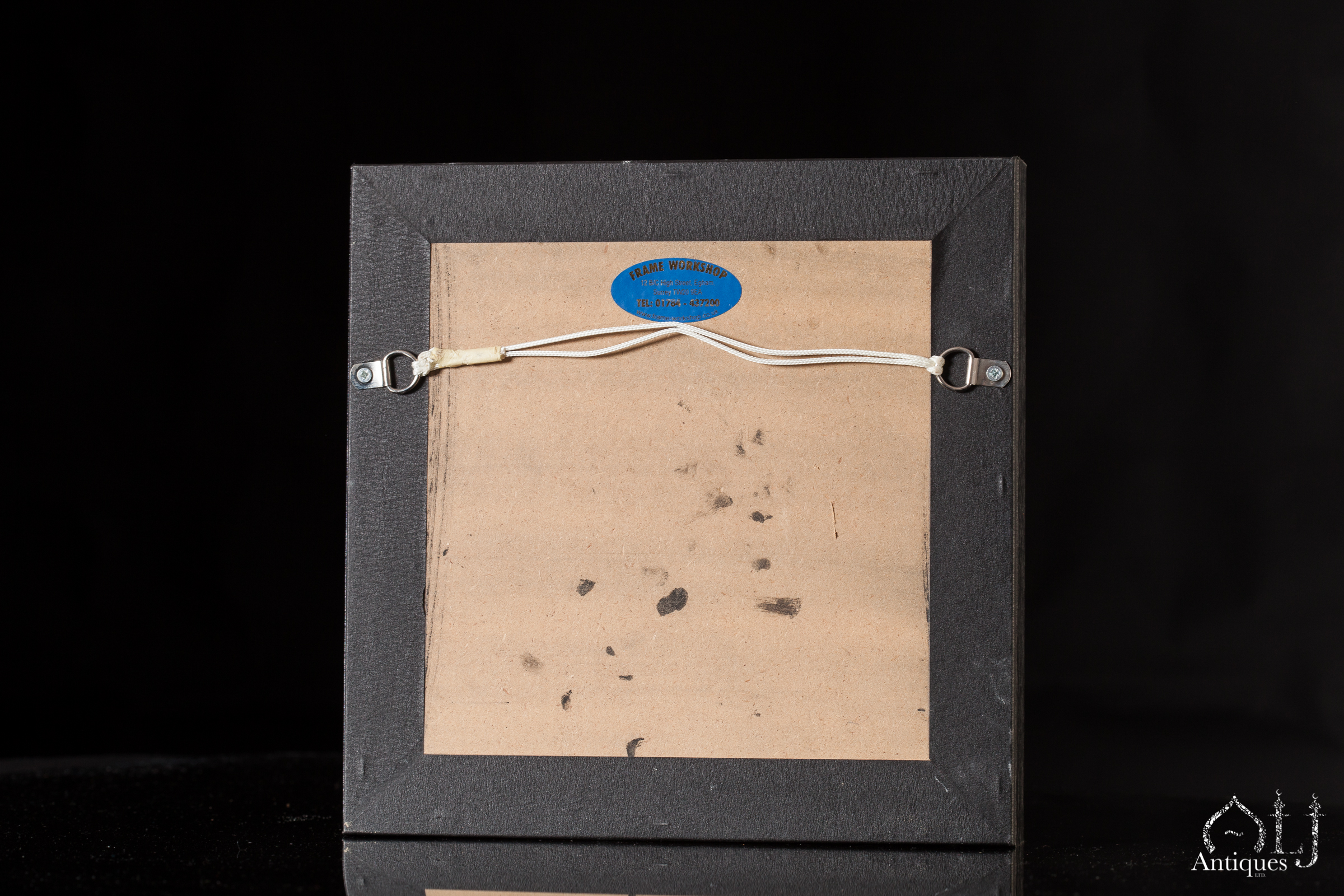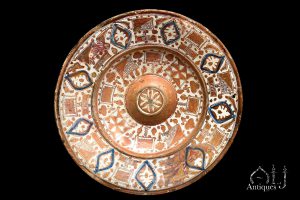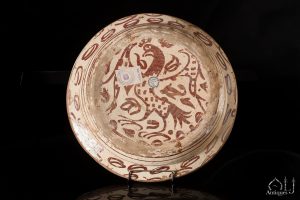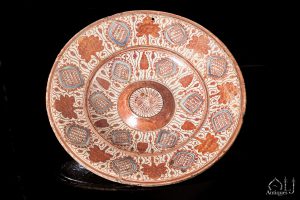Description
The four tiles of a square form, moulded and glazed in white, green, dark and honey-brown with a central twelve-pointed star with radial and stellar design of interlacing polygons and hexagons separated by white interlace borders.
The word CUENCA is derived from the Persian word Curda-Seca (dry string), a technique that was invented by the Muslim potter and was used to preserve and maintain the colours on their original intended place without having them mixed together or melting down in the kiln. Spain, Portugal and afterwards some South American countries have adopted this technique and were widely used to decorate the walls of various monuments and buildings. This technique was simultaneously used in Morocco and is called Zellige. Some traditionally made tiles are still using this technique until the present day.
In Andalucía or During the Moorish period in Spain this technique was first introduced and produced in Seville and afterwards in Toledo where the popular (Arista Pottery tiles) were made, which are very similar in style to our present lot.
Two techniques were used in the making of the Moorish calligraphic, geometric and ornamental types of tiles. The first was the complex and more time consuming method that is based on the ancient mosaic technique, where at first different shapes and pieces were made separately and then put together to form the requested design, some might also call it as the Mudejar technique. The second technique was the Cuerda-seca or Cuenca technique, which is similar to our present lot. Both techniques were widely used in various Moorish and other Spanish buildings and locations such as the Alhambra Palace.

